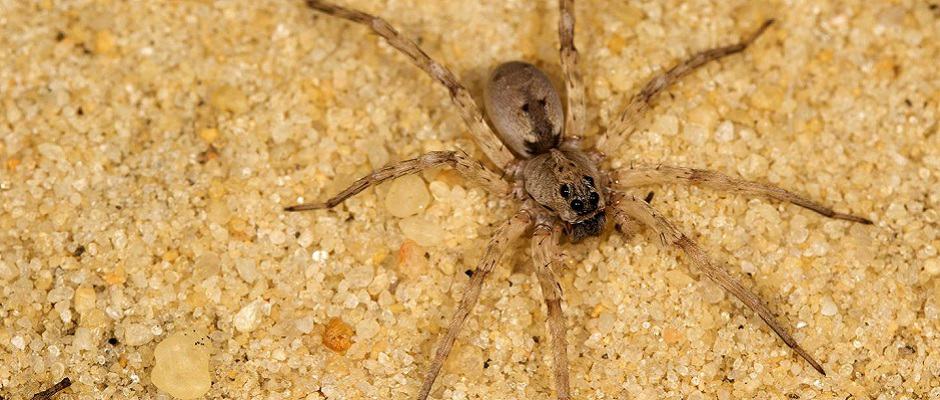Share this article
Watch: Spiders risk lives to attract cannibalistic mates
It’s never easy to find the right partner. But male wolf spiders face the extra challenge of getting eaten by predators while making their elaborate courtship bids to potential mates.
“These elaborate courtship displays are costly because they are visible to a larger variety of predators,” Tricia Rubi, a postdoctoral biology researcher at the University of Victoria in Canada and the lead author of a study published recently in Behavioral Processes.
Impressing female wolf spiders takes some work. Male brush-legged wolf spiders (Schizocosa ocreata) show off in an elaborate display in which they drum their abdomens on the ground and produce sound with a special organ suited for the purpose. The drumming produces vibrations that the females detect. They also wave their front legs, covered in black tufts of hair.
“The bigger the tuft, the stronger the vibration — the females like that kind of thing,” said Rubi, who conducted this research while completing her PhD at the University of Minnesota. “These wolf spiders have this really complex sexual display.”
Aside from the movement and noise, females can make out these black shapes against the leafy brown litter on the forest floor where they are usually found. But even in the best of times, the males play a risky game since the females aren’t above eating the males if they aren’t in the mood for mating.
“Part of the function of this signal is telling the females: ‘This is mating time, please don’t eat me. I’m a good male,’” Rubi said.
While it doesn’t always work in attracting a prospective female that doesn’t want to eat the males, Rubi wanted to see if the male behaviors attracted attention from other predators.
She and her co-authors used screens that showed videos depicting leaf litter and wolf spiders sitting still, walking or courting. Meanwhile, they monitored captive blue jays (Cyanocitta cristata) to see whether they would respond to the different situations. They trained the birds to peck one button to indicate “spider” and another to indicate “no spider.” Then, they showed them each video and they pecked buttons to indicate if they saw a spider.
They found that the birds didn’t detect the spiders if they stayed put. But they saw them when they moved or did courtship dances. The jays also noticed the courtship much more quickly than they noticed spiders that just walked across the surface.
Rubi said that in nature, this probably would translate to the spiders being caught more while courting since they would have less time to sit still and hide — a common predator evasion technique.
Rubi said that other research conducted with toads and wolf spiders shows that the amphibians also detect the courting males more easily, and that some predators like hungry female wolf spiders or other predatory arachnids likely even home in on the vibrations and sounds the spiders make to attract female attention.
The research shows males pay a high cost in their quest to attract females, Rubi said, but they don’t seem to be deterred from trying.
“The females like all these various aspects of the display, so it appears that the benefits outweigh the costs,” she said.
Header Image:
Male wolf spiders that display courting rituals are more like to get eaten by predators.
©Florida Museum of Natural History, Lary Reeves








